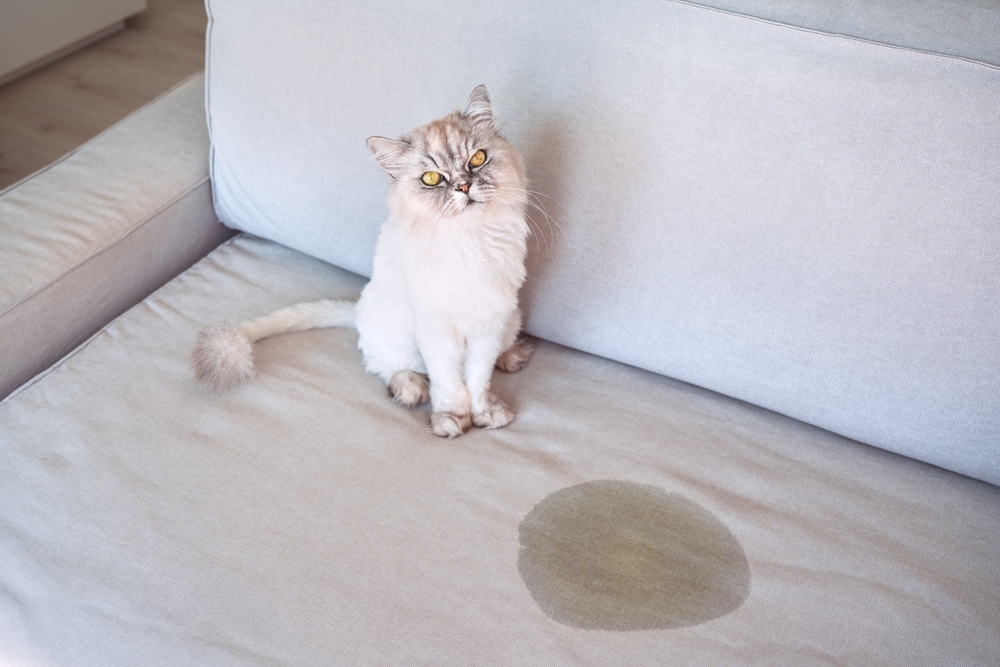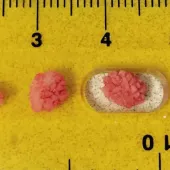Understanding and Addressing Cat Inappropriate Elimination: A Comprehensive Guide
 Cat owners adore their feline companions for their independence, affection, and quirky personalities. However, one common issue that can cause frustration and concern is inappropriate elimination, where a cat urinates or defecates outside of their litter box.
Cat owners adore their feline companions for their independence, affection, and quirky personalities. However, one common issue that can cause frustration and concern is inappropriate elimination, where a cat urinates or defecates outside of their litter box.
Inappropriate elimination
For pets, inappropriate elimination means going to the bathroom or urinating somewhere other than where they have been taught to go.Unwanted removal can be caused by a behavior problem, but medical problems should always be looked into first. The treatment for a medical problem rests on what caused it in the first place. Behavior problems might get better with more training, better ways to deal with worry, or anti-anxiety drugs. Punishments should never be part of the healing plan.

What is inappropriate elimination?
When we think of male cats or dogs "spraying" or using urine to mark their territory, that's usually what comes to mind.But females can also eliminate in inappropriate ways, and it's not always pee; it can also be feces that they leave in strange places.
It's clear that a pet should not go to the bathroom outside, but that doesn't always mean the pet has a "problem." It could mean that the pet is having trouble with housetraining or is communicating with other dogs or people in the family through urine and feces.As an example, a cat might use urine to let other cats know where its area is. Cats often leave urine marks near doors and windows to let other tomcats in the neighborhood know when they see them wandering through the yard. This is a normal behavior for cats, but most cat owners think it's "inappropriate" when it happens in the house. In the same way, a dog may urinate submissively when it feels scared or attacked. In this case, the dog is urinating to show that he or she is not a threat and is letting the owner (or other person) be in charge. The dog is just expressing itself in this way, so it's not really a behavior issue. But the owner doesn't like it, and it can quickly become a bothersome habit.
Inappropriate urination can sometimes be a sign of a real behavioral or emotional problem. Hormones, stress, or worry may be to blame. Adding kids or other pets, having people work in the house, or the owner's recent trip can all cause changes that stress or confuse pets and cause them to act this way.
When it comes to incorrect elimination, the first thing to keep in mind is that the problem is not always behavioral. Please take your pet to the vet as soon as possible so that any health problems can be looked into. In the end, how the problem is treated relies on what caused it in the first place.
What are the medical causes of inappropriate elimination?
Changes in a pet's toilet habits can be caused by a variety of medical problems, including:
- Diabetes and kidney disease: In dogs and cats, both of these diseases cause increased drinking and urination and can cause some pets to have urinary accidents in the house.
- Thyroid disease in cats; Cushings disease in dogs: These illnesses cause increased drinking and urination, which can lead to accidents around the house.
- Urinary tract infection, bladder stones, prostate disease (in dogs), and bladder cancer: These illnesses can cause pets to have urinary accidents.
- Diarrhoea: This can cause faecal accidents in dogs and cats.
- Cognitive dysfunction syndrome: This is a type of dementia that can occur in ageing dogs and cats. Some pets with this condition seem to forget their house-training and can have urinary and faecal accidents in the house.
- Seizures: Pets can urinate or defaecate while having a seizure. If you did not witness the episode, you may come home and find urine or faeces on the floor without any indication that the soiling occurred during a seizure.
- Incontinence: Pets that have lost the ability to control expulsion of urine or faeces (often due to age or spinal injury) deposit waste inappropriately because they can't 'hold' it for the proper time and location. They may even have accidents while sleeping.
- Joint pain/arthritis: A cat with arthritis pain may not be able to climb into a litterbox, causing the cat to relieve itself outside the litterbox. Similarly, a dog with arthritis may be too painful to make it outside before having an accident.
- Constipation (in cats):A cat that associates pain with defaecation may develop an aversion to the litterbox and prefer to defaecate in other areas.
What behavioural problems can cause inappropriate elimination?
The following behavioural factors can also be involved in causing inappropriate elimination:
- Litterbox aversion in cats: A cat may have this problem because:
- The litterbox is not clean enough.
- The litterbox is in an unfavourable location.
- The cat may not like the type of litter.
- The cat may prefer not to share the litterbox with other cats.
- Submissive urination: A dog may urinate when he or she feels threatened. Urination is a way to show submission.
- Urine marking: This can occur because of territorial, sexual, or other reasons.
- Stress or anxiety: This can include separation anxiety.
- Incomplete house-training.
How will my vet diagnose the problem?
Owner observation and medical history are very important for diagnosing the cause of inappropriate elimination. For example, if you have a cat that is spraying (or urine marking), he is likely to stand upright with his tail erect and spray a small amount of urine on walls and other vertical surfaces; occasionally, a marking cat may spray on horizontal surfaces, such as bedding or laundry. This is different from a cat that is simply urinating outside the litterbox due to a medical problem and is not attempting to mark his territory. A cat with a medical problem will generally squat and eliminate urine on a horizontal surface. Other useful historical information includes how long the problem has been going on, how often the events happen, whether any other signs of illness (such as vomiting or appetite loss) have been observed, and if any environmental changes or alterations in your pet's normal routine occurred around the time the problem started.
Your vet will perform a physical examination and may begin the diagnostic process by recommending some tests:
- Urinalysis
- Faecal analysis
- Chemistry panel and CBC (complete blood cell count): These blood tests may show evidence of diabetes, kidney disease, or other medical causes of the problem.
- Radiographs (x-rays): These can help check for bladder stones and a variety of other abnormalities.
Depending on the results of these tests, your vet may recommend more specific tests to screen for Cushing's disease in dogs, thyroid disease in cats, or other medical problems.
Once medical causes of inappropriate elimination are ruled out, diagnostic efforts may focus more on possible behavioural causes. In some cases, a consultation with a veterinary behaviour specialist or certified trainer may be recommended.
How can inappropriate elimination be treated?
If the problem is medical, treatment should target the underlying condition. For behavioural issues, there are many ways to approach treatment. Punishment is never part of the treatment plan.
If a pet is marking and is not already spayed or neutered, having this surgical procedure done can eliminate the problem. It is also helpful to use odour-eliminating products so the pet can't smell the marked areas. Keeping the pet away from the areas that were previously marked is sometimes helpful.
Reducing stress in the pet's environment may help some types of inappropriate elimination. Synthetic pheromone products are available from your vet in spray or plug-in diffuser forms. These products have a calming effect on many pets.
To discourage neighbourhood cats from approaching doors and windows, consider using a spray deterrent that is activated by motion detectors. In addition, provide your pets (especially cats) with a place such as a room, cubby, or perch where they can escape from children or other pets. If all else fails, ask your vet if anti-anxiety medications may be appropriate for your pet.
Many cats lose their homes (and their lives, through euthanasia) due to inappropriate elimination, so it is not a small problem. Getting your pet to your vet right away is the best way to solve the problem before your patience runs out.

This behavior can be caused by various factors, and understanding and addressing the root cause is essential for finding a solution.
- Medical Reasons
Before assuming it's a behavioral issue, it's crucial to rule out any underlying medical conditions. Urinary tract infections, diabetes, kidney disease, and other health problems can lead to discomfort or urgency, prompting a cat to eliminate outside the litter box. Consulting a veterinarian is the first step in identifying and treating any potential health issues.
- Litter Box Preferences
Cats can be picky about their litter box. They may have preferences regarding the type of litter, box size, cleanliness, and even the location of the box. Experiment with different types of litter and ensure the box is large enough for your cat to move comfortably.
- Stress and Anxiety
Cats are sensitive creatures, and changes in their environment or routine can lead to stress. Moving to a new home, introducing a new pet, or changes in household dynamics can all trigger inappropriate elimination. Providing a secure and predictable environment, along with gradual introductions to changes, can help alleviate stress.
- Environmental Enrichment
Enriching your cat's environment can play a significant role in reducing inappropriate elimination. Offer opportunities for physical and mental stimulation, including interactive play, climbing structures, and puzzle toys. This helps channel excess energy and alleviates boredom.
- Litter Box Placement
Where you place the litter box matters. It should be in a quiet, low-traffic area that provides your cat with a sense of privacy. Avoid placing it near their food and water bowls, and ensure it's easily accessible at all times.
- Cleaning and Odor Control
Cats have a strong sense of smell, and if they detect the scent of urine or feces in an area, they may continue to use it as a designated elimination spot. Thoroughly clean any soiled areas with an enzymatic cleaner to eliminate the odor. This helps prevent your cat from returning to the same spot.
- Consistent Routine
Cats thrive on routine. Establishing a regular feeding, play, and litter box cleaning schedule helps create a sense of predictability and security for your cat. This consistency can significantly reduce stress and prevent inappropriate elimination.
- Seek Professional Help
If inappropriate elimination persists despite your efforts, it's crucial to seek the advice of a professional. A veterinary behaviorist or a certified cat behavior consultant can provide specialized guidance and create a tailored behavior modification plan for your specific situation.
Inappropriate elimination can be a challenging issue for cat owners to address, but with patience, understanding, and a systematic approach, it can be managed effectively. Remember, it's essential to consider both medical and behavioral factors when addressing this issue. By identifying the root cause and implementing appropriate changes, you can help your cat return to a healthy and happy life within your home.





